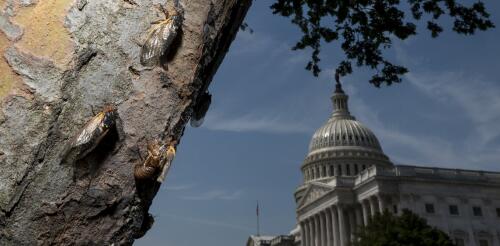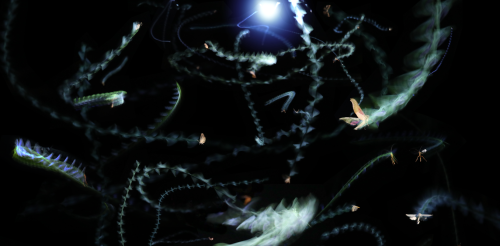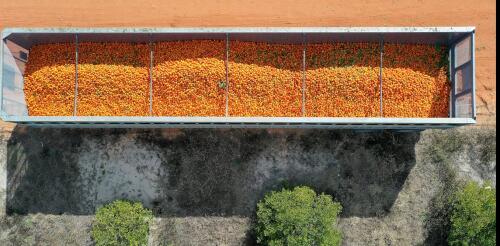Entomology
In the wake of North America’s recent solar eclipse, another historic natural event is on the horizon. From late April through June 2024, the largest brood of 13-year cicadas, known as Brood XIX, will co-emerge with a midwestern brood of 17-year cicadas, Brood XIII. This event will affect 17 states, from Maryland west to Iowa and south into Arkansas, Alabama and northern Georgia, the Carolinas, Virginia and Maryland. A co-emergence like this of two specific broods with different life cycles happens only once every 221 years. The last time these two groups emerged together was in 1803, when Thomas Jefferson was president. For about four weeks, scattered wooded and suburban areas will ring with cicadas’ distinctive whistling, buzzing and chirping mating calls. After mating, each female will lay hundreds of eggs in pencil-size tree branches. Then the adult cicadas will die. Once the eggs hatch, new cicada nymphs will fall from the trees and burrow back underground, st...
Curious Kids is a series for children of all ages. If you have a question you’d like an expert to answer, send it to curiouskidsus@theconversation.com. Why don’t female crickets chirp? – Avery, age 8, Los Angeles Insects communicate in lots of different ways, for many reasons. Some, such as butterflies and beetles, use color, patterns and other visual cues to attract mates or warn potential predators that they don’t taste very good. Others, like fireflies, use bioluminescence – light that they produce in their bodies – to attract potential mates. Still others send chemical signals to interact with other animals and plants, or to defend against predators. Insects also use sound to communicate, most often to attract mates. The ways in which they produce sounds can vary a lot, depending on what insect is making the sound. Ah, there’s the rub Mos...
Aedes aegypti mosquitoes, one of the most common species in the U.S., love everything about humans. They love our body heat and odors, which enable them to find us. They love to feed on our blood to make their eggs mature. They even love all the standing water that we create. Uncovered containers, old tires and junk piles collect water and are perfect for breeding. And with the advent of warm weather across the southern U.S., mosquito breeding season is already underway. Given all the options that Aedes females have in urban areas, how do these cosmopolitan mosquitoes find the perfect site to lay their eggs? Scientists previously thought this was a solitary act, but now research shows that female Aedes aegypti mosquitoes – the main vector in the U.S. for diseases such as Zika, dengue, chikungunya and other viruses – can rely on one another for good reviews of breeding sites. Our Laboratory of Tropical Genetics at Florida International University discovered a new b...
It’s an observation as old as humans gathering around campfires: Light at night can draw an erratically circling crowd of insects. In art, music and literature, this spectacle is an enduring metaphor for dangerous but irresistible attractions. And watching their frenetic movements really gives the sense that something is wrong – that instead of finding food and evading predators, these nocturnal pilots are trapped by a light. Sadly, centuries of witnessing what happens have produced little certainty about why it happens. How does a simple light change fast, precise navigators into helpless, flittering captives? We are researchers examining flight, vision and evolution, and we have used high-speed tracking techniques in newly published research to provide an answer. The reason insects fly around light will surprise you. Moths to a flame? Many old explanations for this hypnotic behavior have not fully panned out. An early notion w...
Citrus trees showing natural tolerance to citrus greening disease host bacteria that produce novel antimicrobials that can be used to fight off the disease, our recent study shows. We found the trees at an organic farm in Clermont, Florida. Citrus greening disease – known more formally as Huanglongbing, or HLB, is caused by the bacterium Candidatus Liberibacter asiaticus. It is spread by an insect called the Asian citrus psyllid. There is no known cure for the disease. We are Florida-based researchers who study sustainable farming practices, a discipline also known as agroecology. Our team has isolated these antimicrobial compounds in the lab and is now working to test them with the goal of producing an effective treatment for HLB. Why it matters HLB has dealt a massive blow to Florida’s iconic citrus industry. Since citrus greening disease was first detected in the state in 2005, Florida citrus production is down by more than 92%. The disease is just one factor....




